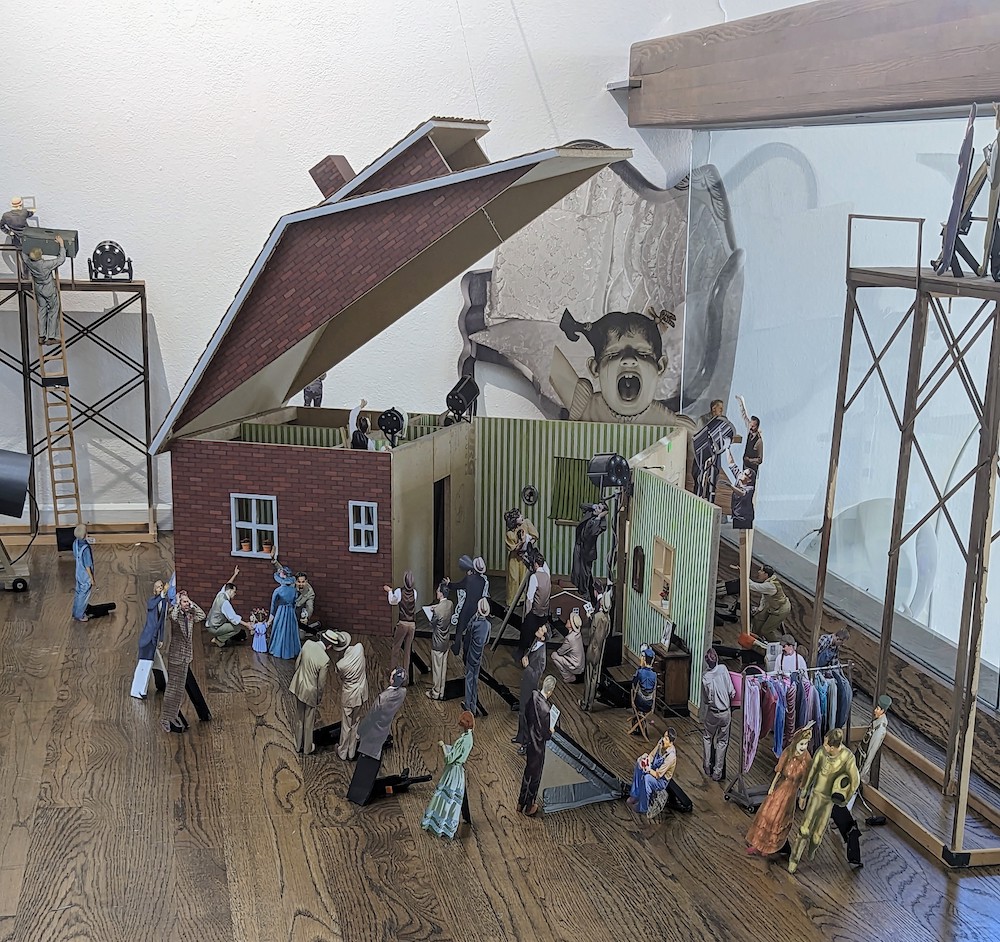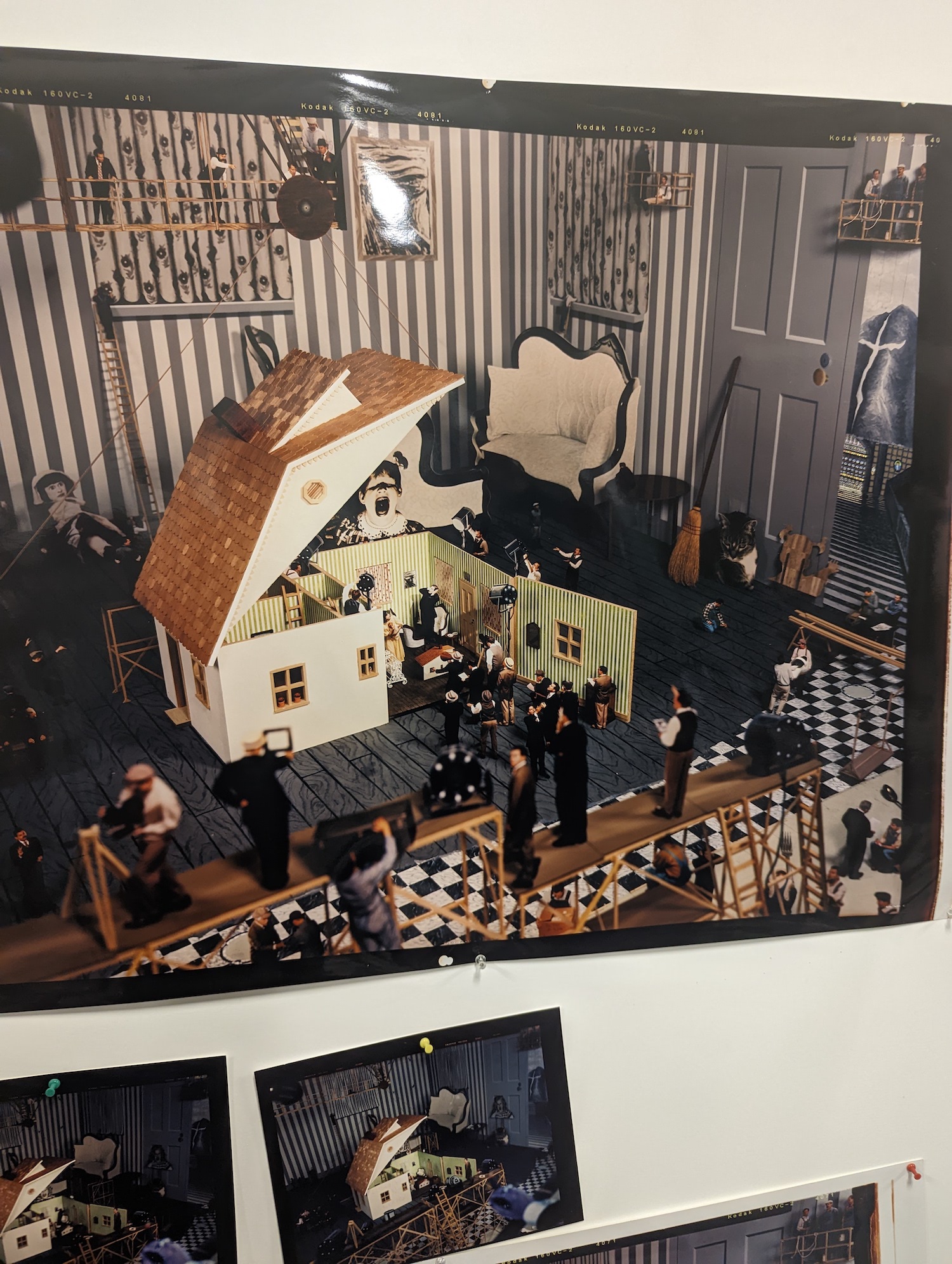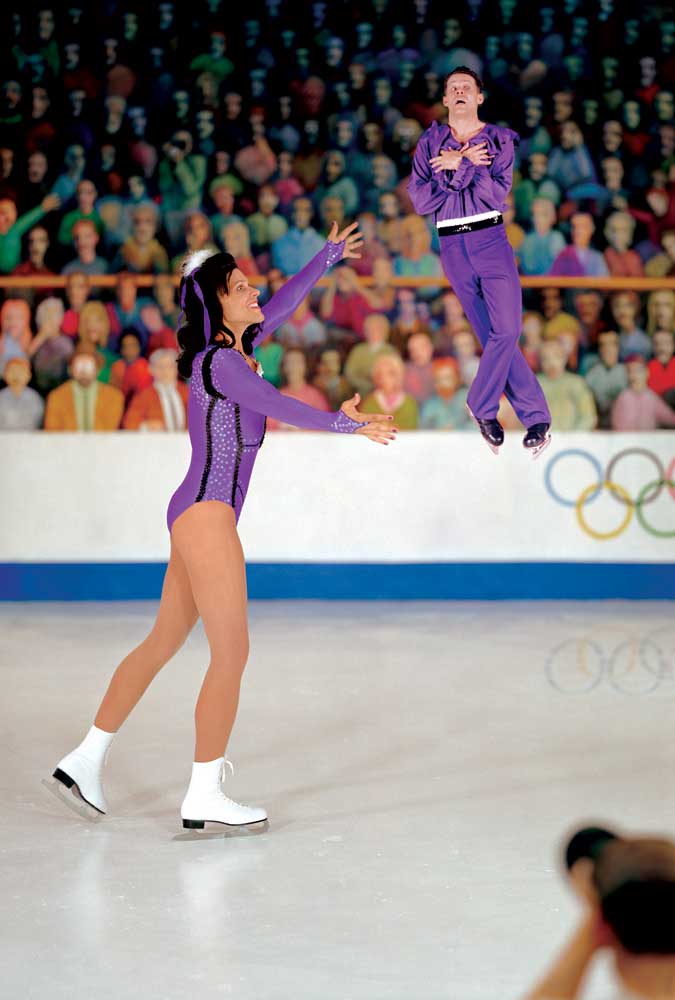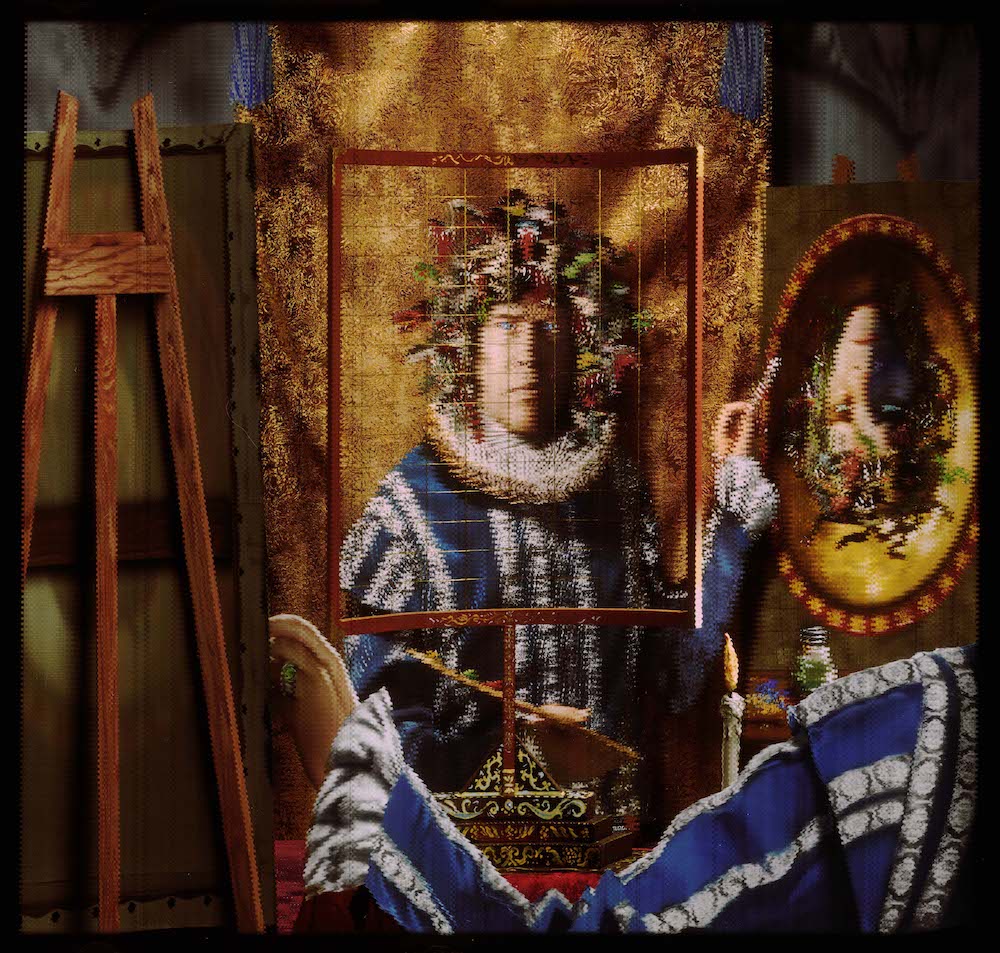Bill Adams: One Man Show Is Equal Parts Entertainment, Ingenuity, and Philosophy
.jpg?sfvrsn=3504abb_4)
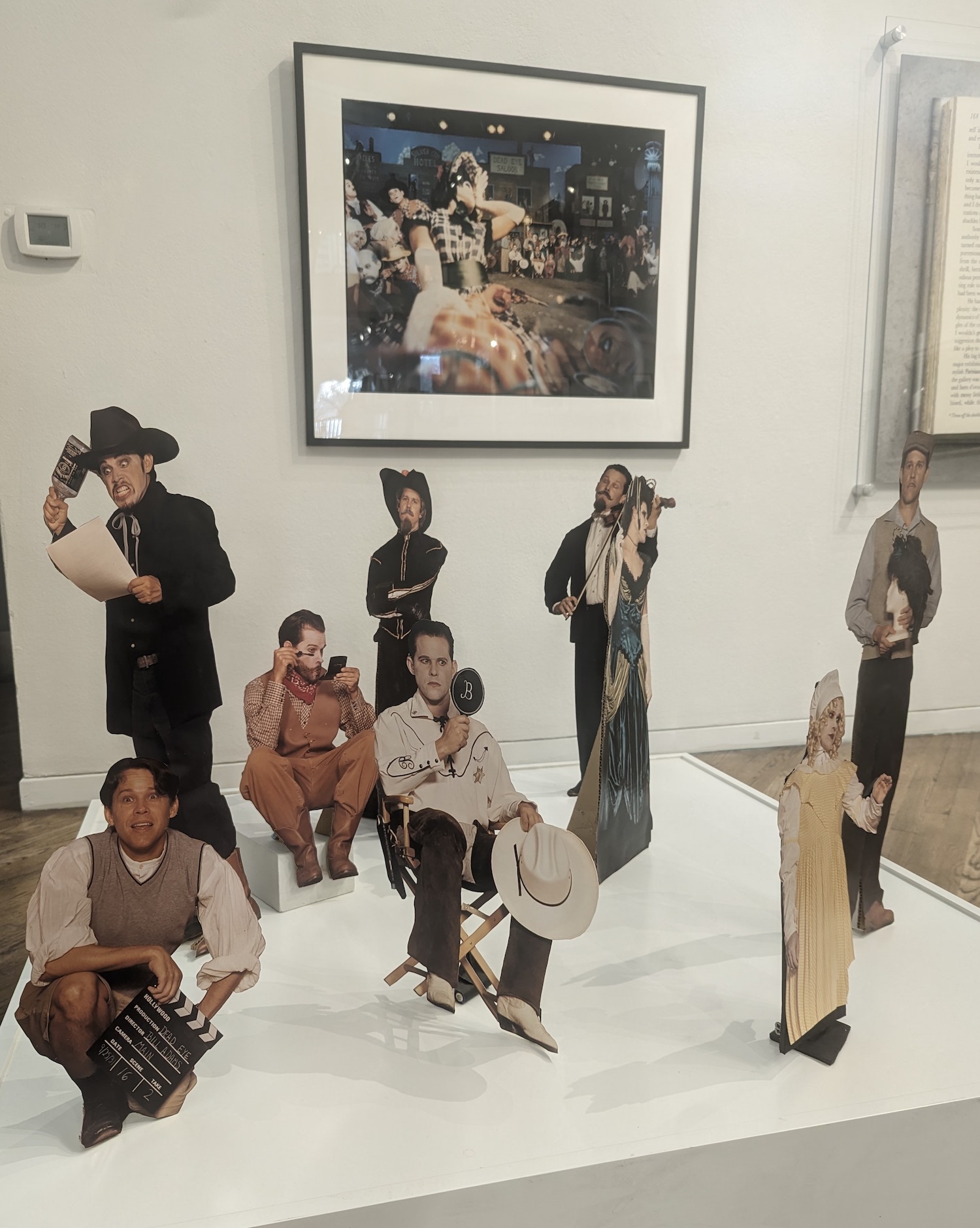

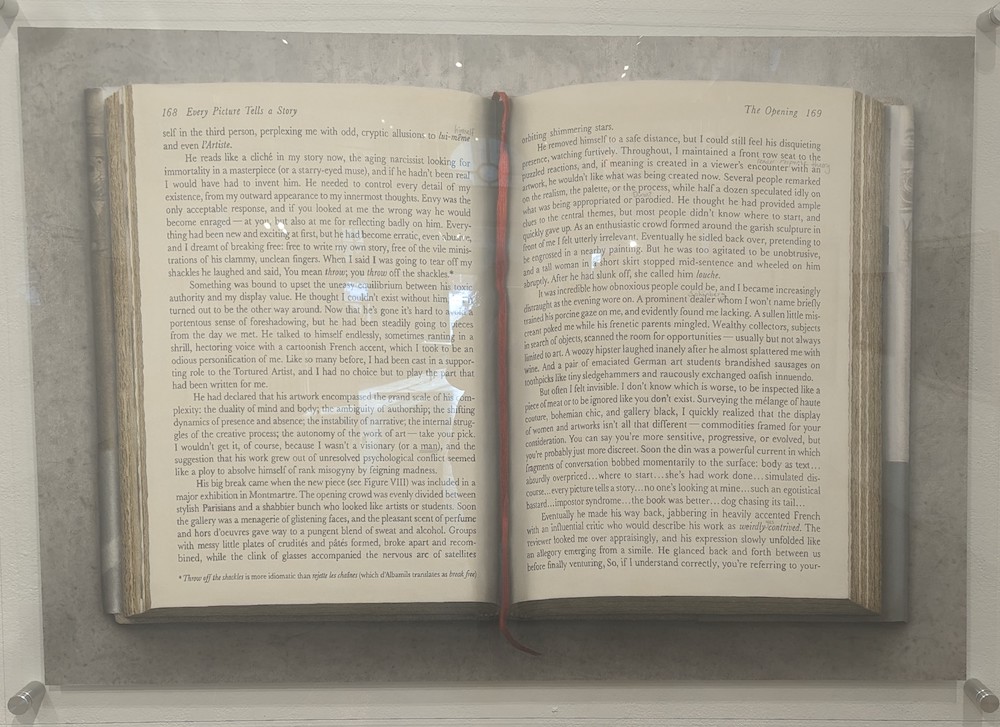
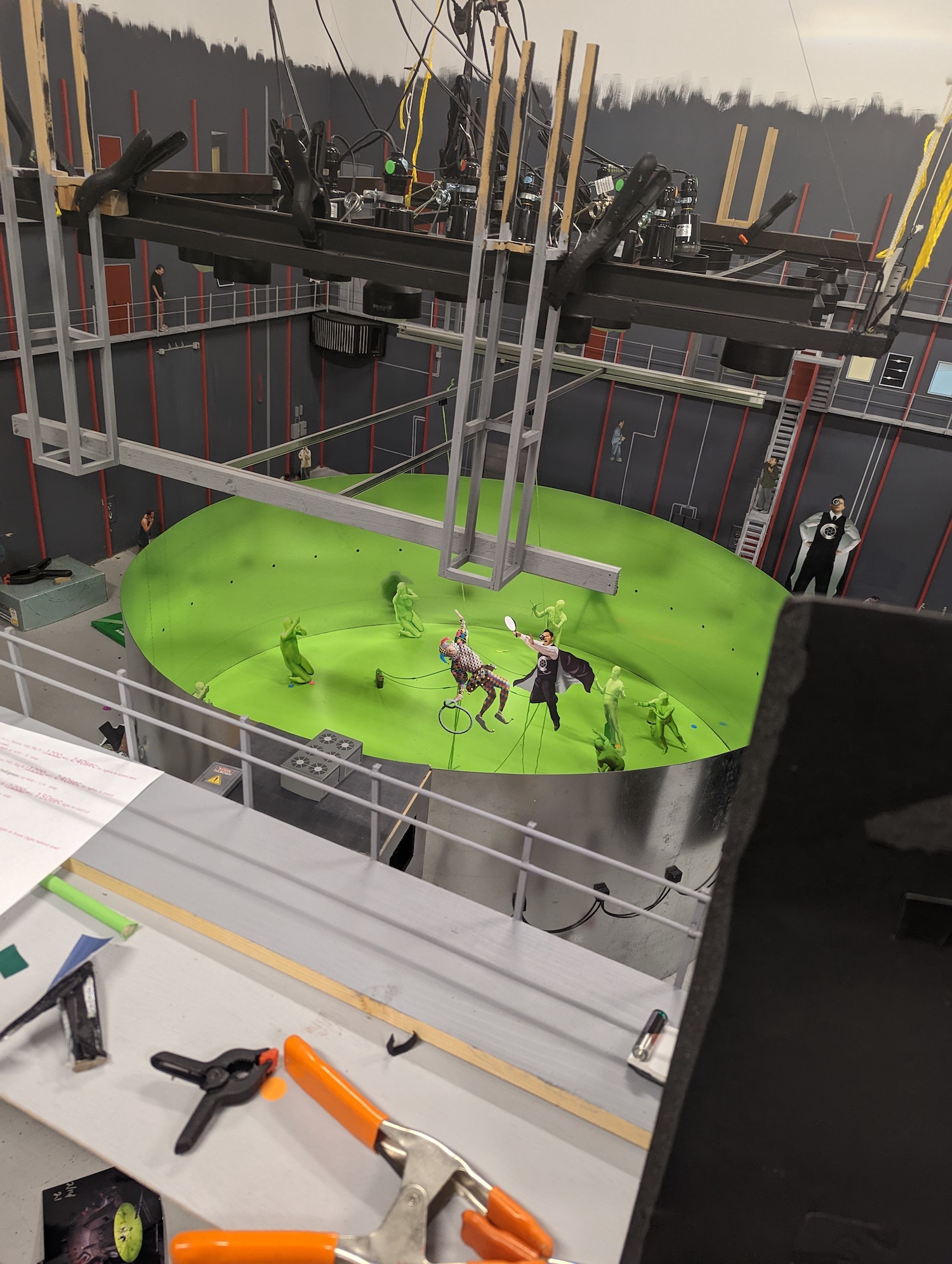
Photographer Bill Adams has been using photo collages to make elaborate images for over 30 years now. A solo show, open in the Emmanuel Art Gallery through March 19, 2023, and aptly titled Bill Adams: One Man Show, gives a behind-the-scenes look at Adams’ intricate—at times laborious—process.
“I think virtually all of the pictures have a puzzle-like quality to them,” says Adams. The viewer who is willing to spend 30 minutes with one image, Adams promises, will be rewarded with Easter eggs, humorous secondary and tertiary stories, and even philosophical ideas concerning the gaze.
The best way to describe Adams’ work is part performance art, part collage, and part photography. “It’s sort of a central contrast or tension within the pictures that you can go back and forth between the apparent scene that you’re looking at (for instance a movie set from 1915 or a bachelor’s party or a kind of grimy city street) and on closer inspection you realize it’s actually a staged scene with all of the characters played by a single person,” Adams explains. That single person is Adams in different costumes.
“I think virtually all of the pictures have a puzzle-like quality to them,” says Adams. The viewer who is willing to spend 30 minutes with one image, Adams promises, will be rewarded with Easter eggs, humorous secondary and tertiary stories, and even philosophical ideas concerning the gaze.
The best way to describe Adams’ work is part performance art, part collage, and part photography. “It’s sort of a central contrast or tension within the pictures that you can go back and forth between the apparent scene that you’re looking at (for instance a movie set from 1915 or a bachelor’s party or a kind of grimy city street) and on closer inspection you realize it’s actually a staged scene with all of the characters played by a single person,” Adams explains. That single person is Adams in different costumes.
Video created by Tim Brown '24, film & television.
Humorous and Entertaining on One Level, Philosophical on Another
However, one should not jump to the conclusion that the conceit is the whole point of the image. “At a casual glance the photos and paintings can seem straightforward scenes; however, spend time examining the works more closely, and the artist gives us clues asking who is the viewer, who is being watched, and whose gaze is in control,” says Jeff Lambson, director of the Emmanuel Art Gallery.
The 30 or so pieces that compose Bill Adams: One Man Show represent decades of work. For instance, “Billboard”, a large piece hung on the second level of the Emmanuel Art Gallery, took Adams 10 years to complete. It took so long, in fact, that when Adams decided the central character in the image should look older, he found he had aged enough since the onset of the project that his current look fit the bill.
A handful of the images are of movie sets. “Dead Eye” depicts an old western shot in the late 1920s, just as movies were transitioning from silent films to “talkies”. In the foreground, the viewer sees a “Dead Eye”, the reflection of someone’s eye in a pair of glasses. On the right side of the image, we see the camera (set up on a moveable platform with wheels) and a person standing just to the side of the camera, holding a gun just in front of the lens. It appears as if the movie scene is being shot from the perspective of the killer. But as the viewer of the image, we are on the other side, as if we are in the shoes of the victim. Further scrutiny of the image reveals all the different people along the perimeter. Extras, the director, even assistants are just off camera, including a cluster of voice actors who are speaking into microphones as they are being directed.
Adams says “Dead Eye” is a commentary on the changing nature of looking, or specifically the subject-object relationship. Growing up with a father who taught philosophy at UC Berkeley, Adams is familiar with the work of Jacques Lacan and Jean Baudrillard, and their influence on Adams’ work cannot be denied. “Psychoanalysis has been a central idea in film and art criticism for decades, exploring the sometimes subconscious role of signs, symbols, and the gaze of the viewer. It is unique to see an artist play with these precepts in such poignant and clever ways. Bill delves into critical theories of power roles between viewer and subject, but does it with a wink and a nod that is both self-deprecating to the artist and empowering to us as we take on the role of the artist in the work,” says Lambson.
One can view Adams’ pictures casually, at face-value, as humorous, elaborate scenes revolving around one person. “I know that many people will look at them, appreciate them, enjoy them—perhaps—on an entirely humorous level—the level of entertainment,” says Adams. But for those who want to look a bit deeper, “look at the different kinds of relationships that are set up—particularly with respect to subject and object (the looker and the thing looked at), especially as they relate to representation…Those people might see connections to Lacan and Baudrillard.”
Everything Is Not What It Seems
Another set of pictures in the exhibition are large, two-page spreads of books. The stories, written by Adams, are designed to be cyclical (the last sentence on the second page feeds into the first sentence on the first page). While at first glance the pictures appear to be photographs of books, they are actually hand-fabricated images—each letter painstakingly colored in with a colored pencil to mimic the effect of a photograph and take years to create. The stories themselves, like Adams’ staged photos, hold Easter eggs and surprises throughout.
For instance, the piece “Every Picture Tells a Story” has an immersive element to it. “Anyone reading it assumes it was written by a young woman, but as you get to the end and the story circles back around to bring you back to the beginning, you come to a different realization. There’s the possibility that the story is actually being narrated by the artwork itself; it’s taking place at an art gallery, and you’re hearing a lot of things that people are saying about this piece.”
Props Give Insight Into Adams' Creative Process
Another important element of Bill Adams: One Man Show is a selection of the props Adams used to create his images. Adams hopes these objects will “amplify” the viewer’s experience of his work and give some context to how things were fabricated.
One such prop is a replica of a device and modified camera Adams used to create the image “Medusa”. The image shows Adams dressed as a Renaissance painter working on a self-portrait. The painter, complete with Medusa-like snakes for hair, is using a grid to assist in painting his portrait accurately. Adams shot the image in approximately 375 pieces by making a special block attached to the camera lens that allowed 1 mm of the film to be exposed at a time. Simultaneously, he had an image of himself as the artist set up on a turntable that he (with the help of his assistants, Anthony Porcaro and Peter Krausa) would move sixth tenths of a degree for each shot. The 375 shots required to make the final composite photograph take three hours to complete. Adams ends up walking about two miles back and forth between the large format camera and turntable. Through the massive mechanism bolted to the concrete floor of his studio, Adams is able to capture 230 degrees in one “flat” photograph, playing with the ideas of space, perspective, the viewer, and subject.
Bill Adams was born in Walnut Creek, California, in 1964, and grew up in Santa Cruz. He received a BA in Politics from Princeton University, and an MA and MFA in Photography from The University of New Mexico. He has taught photography at The University of Colorado Denver since 2003. Bill lives in Lakewood, Colorado, with his wife, photographer Carol Golemboski, and their two children, Elias and Claudia.
Bill Adams: One Man Show is open now through March 19, 2023 in the Emmanuel Art Gallery. The public is encouraged to attend two special events: An opening celebration on February 9, 2023 from 4-7pm, and an artist’s talk on March 16, 2023 at 5pm.
Written by Megan Briggs-Pintel, CAM Communications
